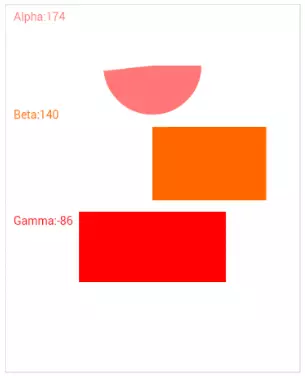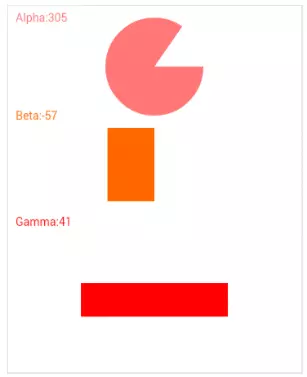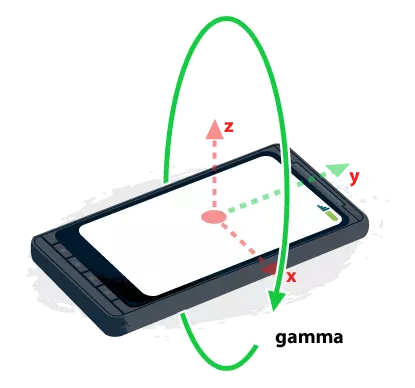Using Device Orientation in HTML5
HTML5 Device Orientation API: A Comprehensive Guide
This article explores the HTML5 Device Orientation API, a powerful tool for creating responsive web applications that react to a device's physical orientation. We'll cover its functionality, implementation, browser compatibility, and practical applications.
Key Concepts:
- Device Orientation Detection: The API allows web apps to detect a device's orientation relative to gravity using three angles: alpha (rotation around the z-axis), beta (rotation around the x-axis), and gamma (rotation around the y-axis).
- Angle Measurement: These angles provide precise information about the device's position, enabling dynamic responses within the application.
- Browser Compatibility: It's crucial to check for browser support before using the API. Feature detection ensures graceful degradation for unsupported browsers.


Browser Compatibility and Feature Detection:
Before implementing the API, verify browser support. While many modern browsers support it, using Can I Use.com is recommended. In your code, employ feature detection:
if (window.DeviceOrientationEvent) {
// Browser supports DeviceOrientation
} else {
console.log("Device Orientation not supported by this browser.");
}Getting Started: Basic HTML Structure:
Create a basic HTML file with a <canvas> element to display our orientation-responsive graphics. The script will handle device orientation event listening and feature detection.
<!DOCTYPE html> <html> <head> <title>Device Orientation Example</title> </head> <body> <canvas id="myCanvas" width="360" height="450" style="border:1px solid #d3d3d3;"></canvas> <🎜> </body> </html>
Understanding Alpha, Beta, and Gamma:
The API uses a 3D coordinate system (as illustrated below) to define these angles:

- Alpha: Rotation around the z-axis (0-360 degrees). 0 degrees points the device's top towards Earth's North Pole.

- Beta: Rotation around the x-axis (-180-180 degrees). 0 degrees means the device is parallel to the Earth's surface.

- Gamma: Rotation around the y-axis (-90-90 degrees). 0 degrees means the device is parallel to the Earth's surface.

The deviceorientation Event Handler:
This function processes the deviceorientation event, updating the canvas based on the received alpha, beta, and gamma values.
if (window.DeviceOrientationEvent) {
// Browser supports DeviceOrientation
} else {
console.log("Device Orientation not supported by this browser.");
}(Complete Code Example - Simplified for brevity; Refer to original for full drawing logic):
<!DOCTYPE html> <html> <head> <title>Device Orientation Example</title> </head> <body> <canvas id="myCanvas" width="360" height="450" style="border:1px solid #d3d3d3;"></canvas> <🎜> </body> </html>
Conclusion:
The HTML5 Device Orientation API offers a straightforward yet powerful way to enhance web applications with responsiveness to device orientation. Remember to always check for browser support and handle potential compatibility issues for a robust user experience. Further exploration of the API's capabilities will unlock a wide range of creative and interactive applications.
The above is the detailed content of Using Device Orientation in HTML5. For more information, please follow other related articles on the PHP Chinese website!

Hot AI Tools

Undresser.AI Undress
AI-powered app for creating realistic nude photos

AI Clothes Remover
Online AI tool for removing clothes from photos.

Undress AI Tool
Undress images for free

Clothoff.io
AI clothes remover

Video Face Swap
Swap faces in any video effortlessly with our completely free AI face swap tool!

Hot Article

Hot Tools

Notepad++7.3.1
Easy-to-use and free code editor

SublimeText3 Chinese version
Chinese version, very easy to use

Zend Studio 13.0.1
Powerful PHP integrated development environment

Dreamweaver CS6
Visual web development tools

SublimeText3 Mac version
God-level code editing software (SublimeText3)

Hot Topics
 What should I do if I encounter garbled code printing for front-end thermal paper receipts?
Apr 04, 2025 pm 02:42 PM
What should I do if I encounter garbled code printing for front-end thermal paper receipts?
Apr 04, 2025 pm 02:42 PM
Frequently Asked Questions and Solutions for Front-end Thermal Paper Ticket Printing In Front-end Development, Ticket Printing is a common requirement. However, many developers are implementing...
 Demystifying JavaScript: What It Does and Why It Matters
Apr 09, 2025 am 12:07 AM
Demystifying JavaScript: What It Does and Why It Matters
Apr 09, 2025 am 12:07 AM
JavaScript is the cornerstone of modern web development, and its main functions include event-driven programming, dynamic content generation and asynchronous programming. 1) Event-driven programming allows web pages to change dynamically according to user operations. 2) Dynamic content generation allows page content to be adjusted according to conditions. 3) Asynchronous programming ensures that the user interface is not blocked. JavaScript is widely used in web interaction, single-page application and server-side development, greatly improving the flexibility of user experience and cross-platform development.
 Who gets paid more Python or JavaScript?
Apr 04, 2025 am 12:09 AM
Who gets paid more Python or JavaScript?
Apr 04, 2025 am 12:09 AM
There is no absolute salary for Python and JavaScript developers, depending on skills and industry needs. 1. Python may be paid more in data science and machine learning. 2. JavaScript has great demand in front-end and full-stack development, and its salary is also considerable. 3. Influencing factors include experience, geographical location, company size and specific skills.
 How to merge array elements with the same ID into one object using JavaScript?
Apr 04, 2025 pm 05:09 PM
How to merge array elements with the same ID into one object using JavaScript?
Apr 04, 2025 pm 05:09 PM
How to merge array elements with the same ID into one object in JavaScript? When processing data, we often encounter the need to have the same ID...
 Is JavaScript hard to learn?
Apr 03, 2025 am 12:20 AM
Is JavaScript hard to learn?
Apr 03, 2025 am 12:20 AM
Learning JavaScript is not difficult, but it is challenging. 1) Understand basic concepts such as variables, data types, functions, etc. 2) Master asynchronous programming and implement it through event loops. 3) Use DOM operations and Promise to handle asynchronous requests. 4) Avoid common mistakes and use debugging techniques. 5) Optimize performance and follow best practices.
 How to achieve parallax scrolling and element animation effects, like Shiseido's official website?
or:
How can we achieve the animation effect accompanied by page scrolling like Shiseido's official website?
Apr 04, 2025 pm 05:36 PM
How to achieve parallax scrolling and element animation effects, like Shiseido's official website?
or:
How can we achieve the animation effect accompanied by page scrolling like Shiseido's official website?
Apr 04, 2025 pm 05:36 PM
Discussion on the realization of parallax scrolling and element animation effects in this article will explore how to achieve similar to Shiseido official website (https://www.shiseido.co.jp/sb/wonderland/)...
 The Evolution of JavaScript: Current Trends and Future Prospects
Apr 10, 2025 am 09:33 AM
The Evolution of JavaScript: Current Trends and Future Prospects
Apr 10, 2025 am 09:33 AM
The latest trends in JavaScript include the rise of TypeScript, the popularity of modern frameworks and libraries, and the application of WebAssembly. Future prospects cover more powerful type systems, the development of server-side JavaScript, the expansion of artificial intelligence and machine learning, and the potential of IoT and edge computing.
 The difference in console.log output result: Why are the two calls different?
Apr 04, 2025 pm 05:12 PM
The difference in console.log output result: Why are the two calls different?
Apr 04, 2025 pm 05:12 PM
In-depth discussion of the root causes of the difference in console.log output. This article will analyze the differences in the output results of console.log function in a piece of code and explain the reasons behind it. �...









